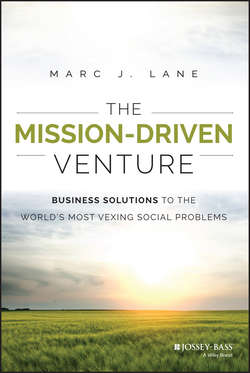Читать книгу The Mission-Driven Venture - Lane Marc J. - Страница 11
На сайте Литреса книга снята с продажи.
Chapter 1
Nothing Stops a Bullet Like a Job
The Origin of Mission-Driven Ventures
ОглавлениеBut how did we get here? The origin of mission-driven ventures in the United States can be traced back to pre-Revolutionary New England when for-profit enterprises and organizations that promoted the social welfare were seen as necessarily separate and distinct, such that the latter's missions could only be funded with private donations. This conceptual distinction was preserved throughout the 19th century, with the establishment of charitable trusts and foundations by wealthy industrialists like Andrew Carnegie, and even through most of the 20th century. Adopted as federal law in 1954, Section 501(c)(3) of the U.S. Internal Revenue Code perfected the non-profit organization as we know it today – an organization with the sole purpose of engaging in charitable, educational, or other benevolent activities. Because non-profit organizations engage in only these kinds of activities – and, by definition, do not seek profit – they generally pay no taxes to federal, state, or local governments.
Traditionally, non-profits were funded almost entirely through government grants and private donations. But over the last thirty years or so, non-profits have come to rely more heavily on “earned” revenue generated from businesses that are substantially related to the charitable, educational, or other activities they are organized to carry out for the public good.
Just as non-profit organizations started to embrace for-profit business opportunities to diversify their sources of revenue while pursuing their missions, for-profit businesses began to engage in activities traditionally left to the nonprofit sector. The turning point may have been in 1967 when William C. Norris, then the CEO of supercomputer manufacturer Control Data Corporation, opened production plants in several impoverished cities and rural areas to create jobs that provided stable incomes and high-tech training for people who otherwise would have been left behind, like so many of the youth Juma Ventures serves. Norris was inspired by legendary Urban League president Whitney Young, who rallied against the social and economic injustice young African-Americans had long suffered. Norris also witnessed firsthand the 1967 Minneapolis race riot, painful evidence of that very injustice. Many contemporary corporations have followed Control Data's lead, adopting socially responsible practices either in the form of corporate philanthropy (dedicating a portion of their profits to fund activities that are socially beneficial) or as part of their business models (sourcing fair-trade agricultural products for which buyers pay more so that farmers in the developing world can earn more).
They have many reasons to do so. For one thing, it's good for their bottom lines. According to B Lab, over sixty million Americans today say that it's not just the cost, convenience, and quality of the products they buy that matter to them; it's also their social and environmental impact. Moreover, according to Raj Sisodia of Babson College, publicly traded corporations that compensate their employees generously, invest in their communities, and make a conscious effort to reduce their adverse impact on the environment outperformed the S&P 500 Index by a factor of 10.5 over the years 1996 to 2011.
These companies treat their stakeholders well, so their suppliers are happier to do business with them. Their employees are more engaged, productive, and likely to stay with them for the long haul. They are welcome in the communities in which they do business. And their customers are among the most loyal, according to Sisodia.
But it's not only profitability that motivates these corporations to adopt socially responsible practices. It's also the belief that for-profit businesses can be a force for economic and social good, more so perhaps than any other economic sector.
